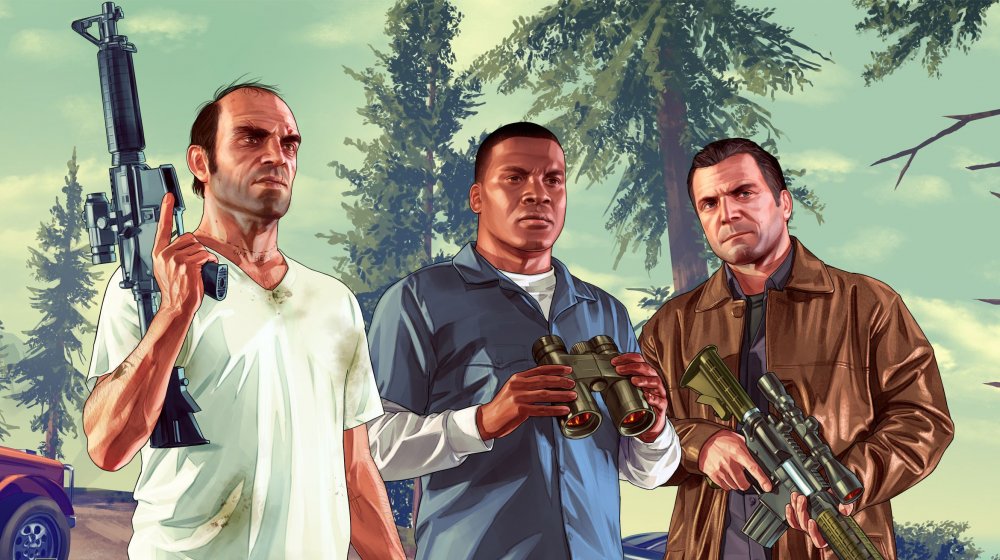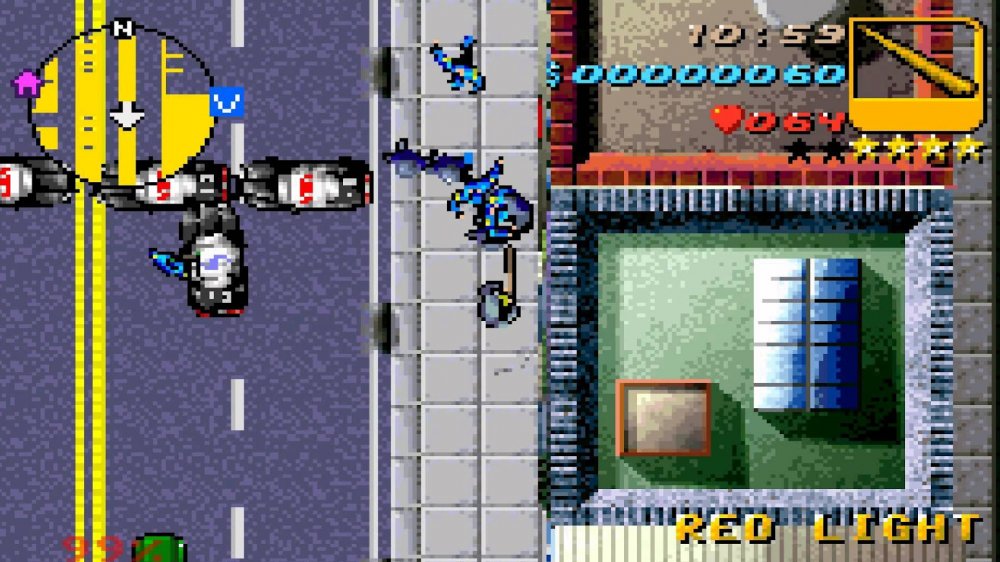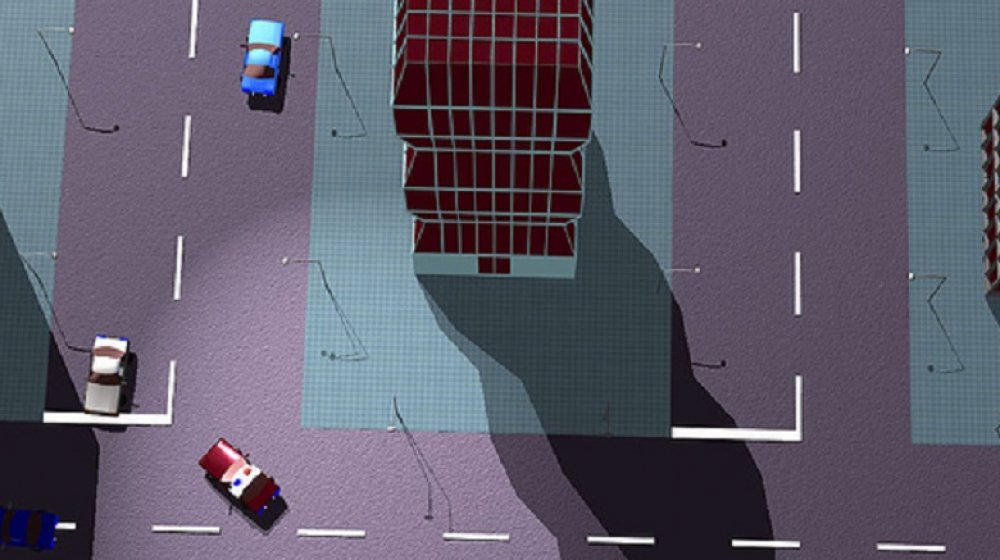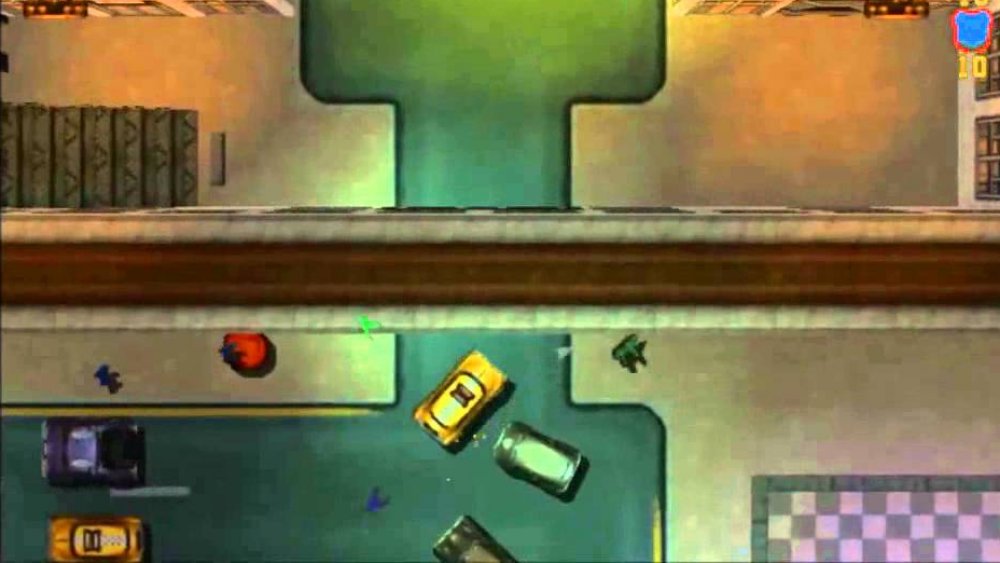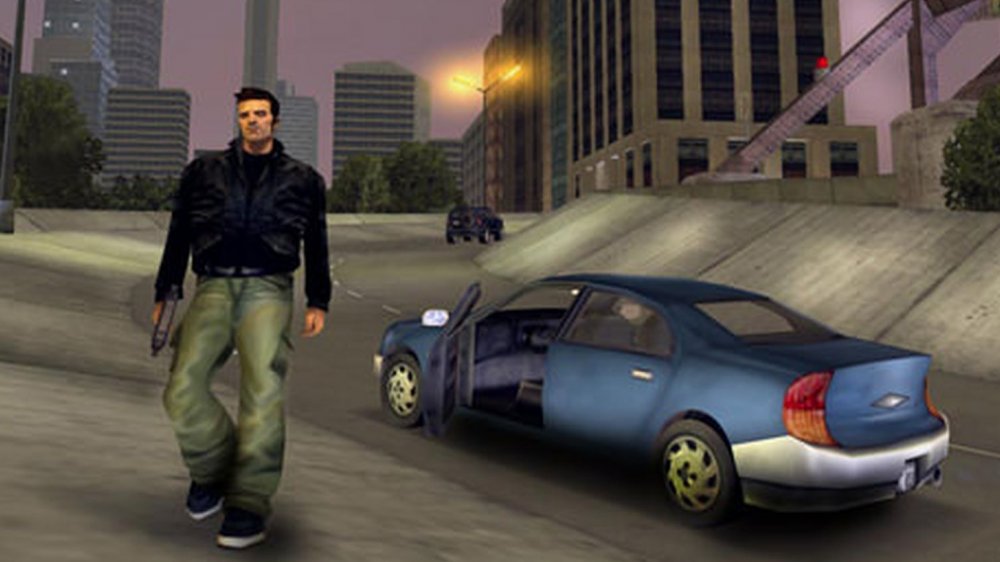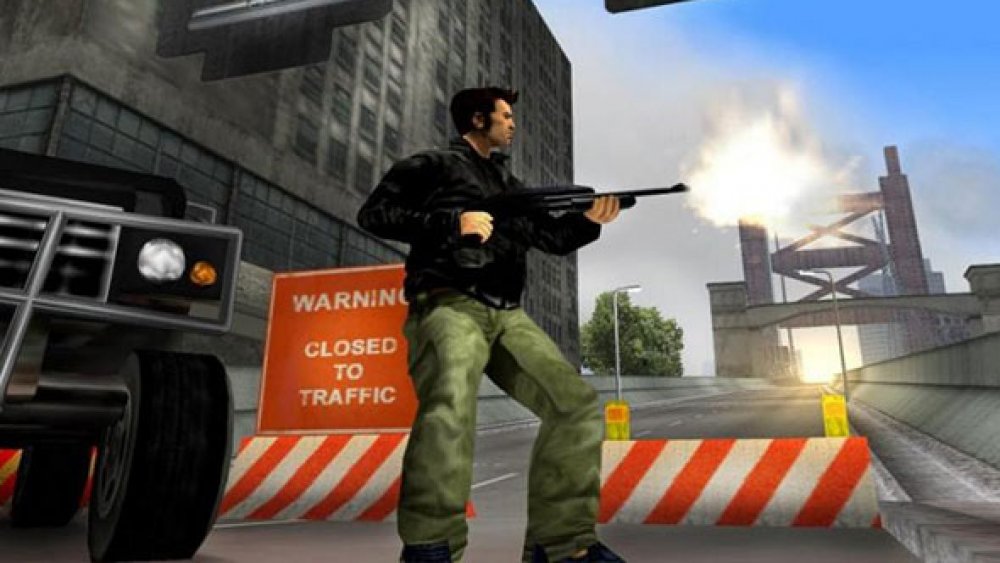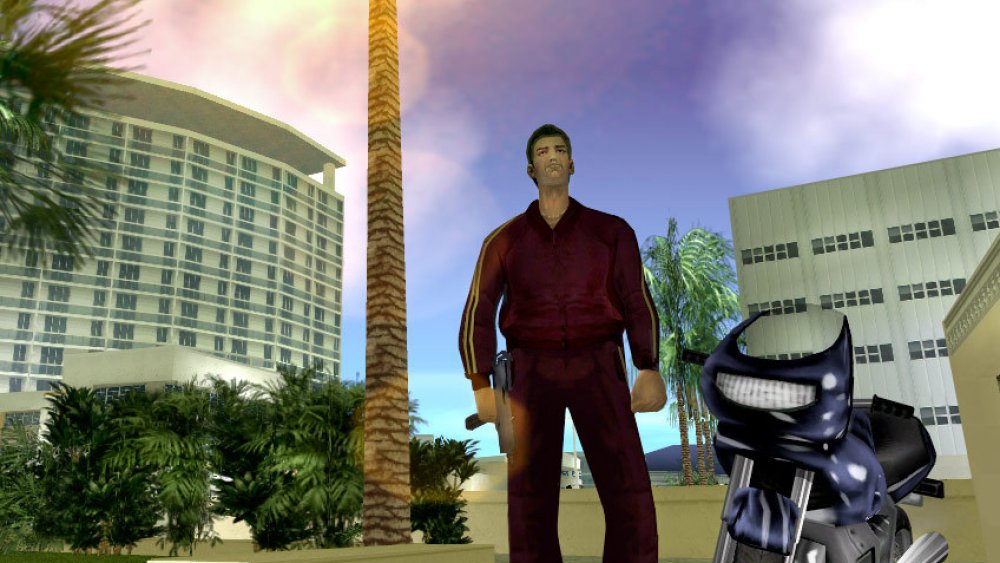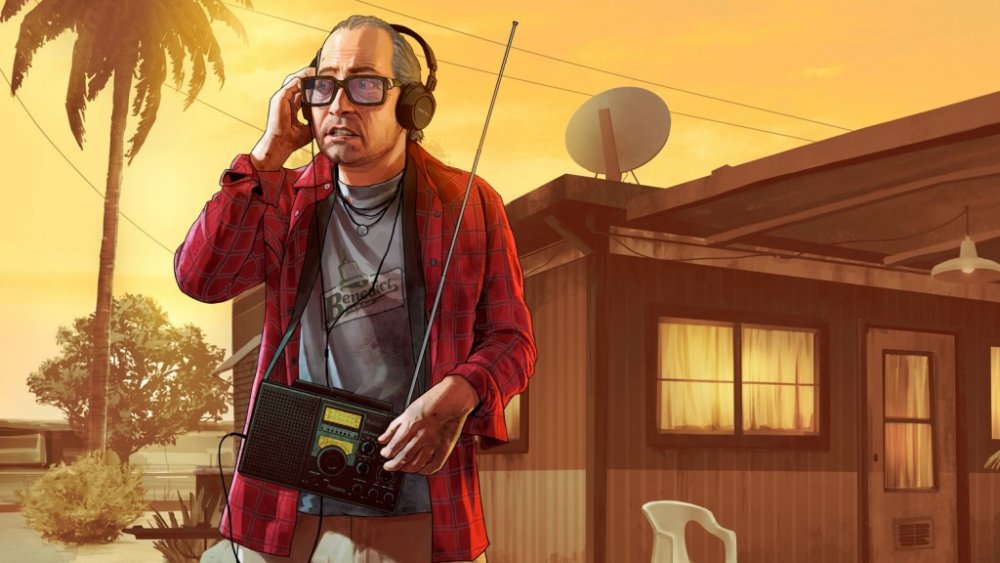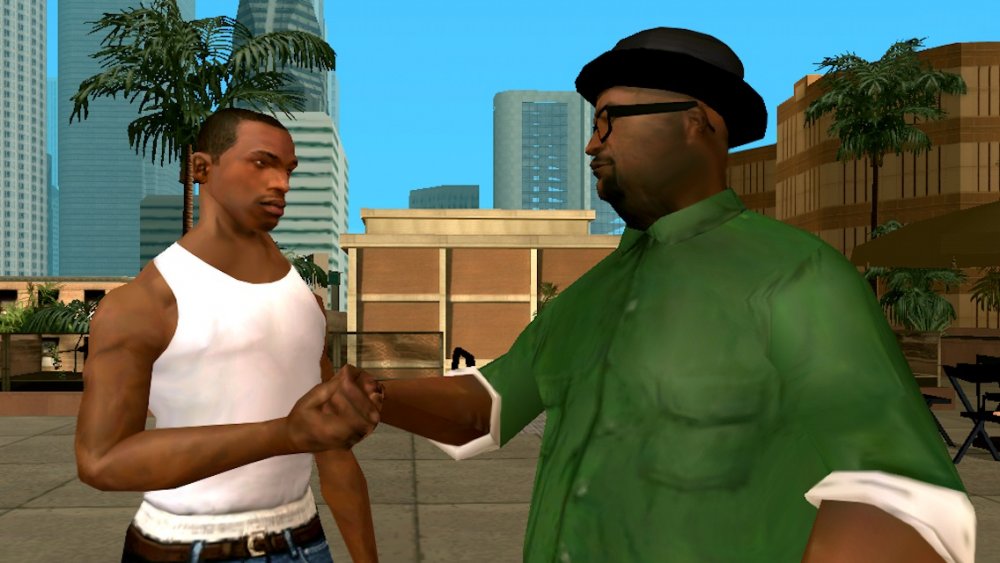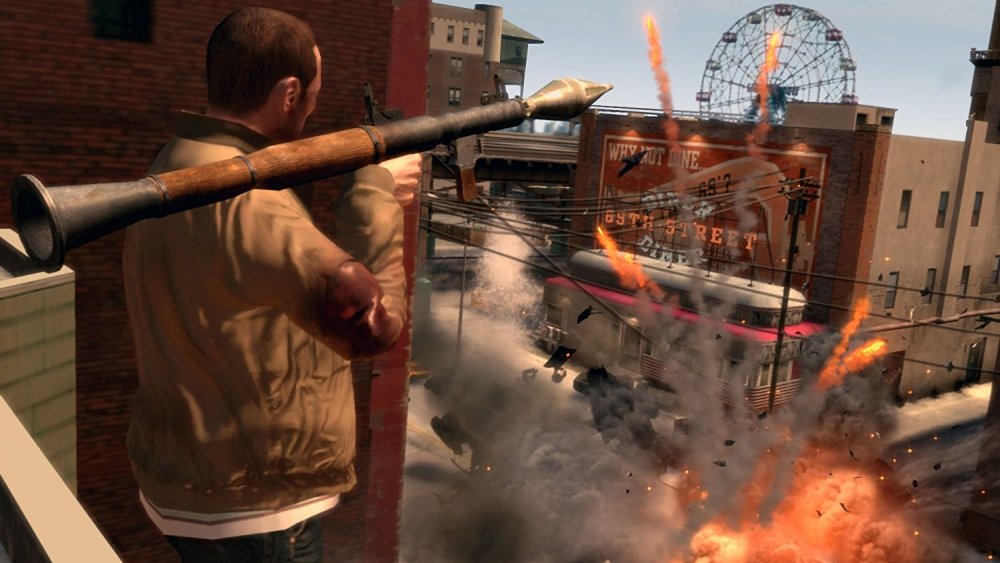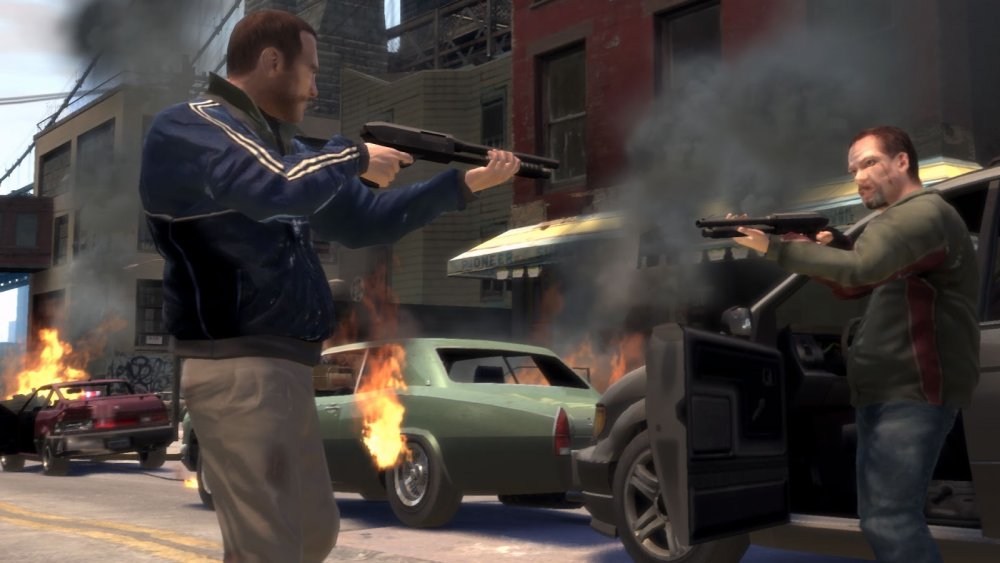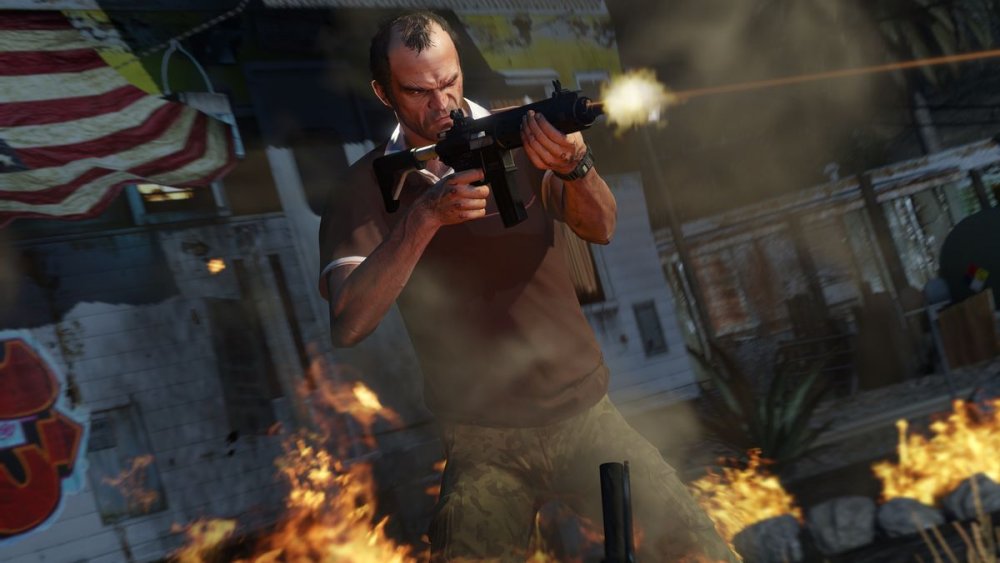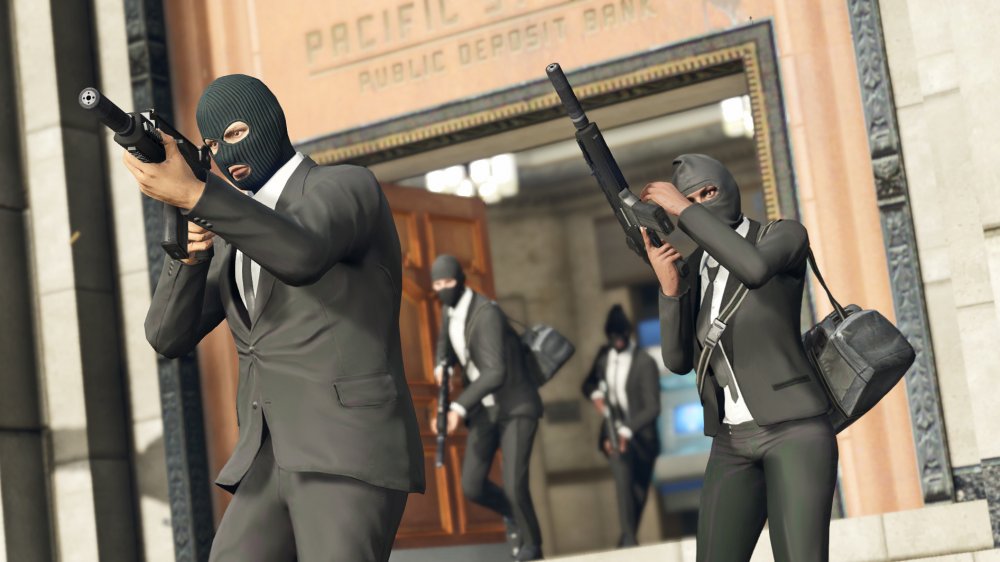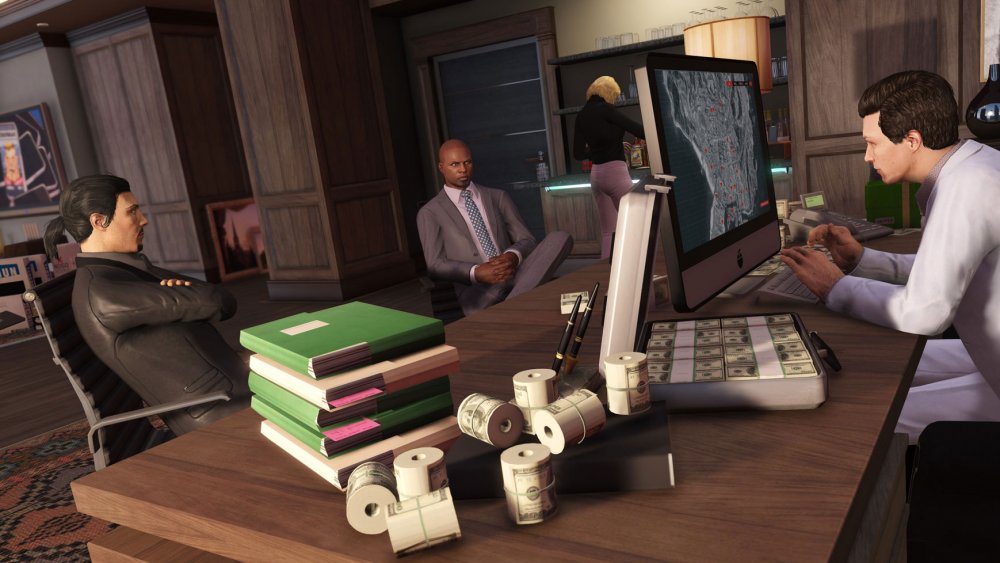The Stunning Transformation Of Grand Theft Auto
Since the release of Grand Theft Auto 3 in 2001, Rockstar's most notorious franchise has set the standard for open world games and engaging storytelling. Grand Theft Auto 5 was officially crowned the best selling-game of the 2010s and remains at the top of the charts.
The longevity of both the series and its 2013 installment are due to Rockstar's mastery of some of the core elements that make the Grand Theft Auto franchise so inescapable. The freedom the titles allow tie into tightly structured missions and plotlines that keep gamers engaged. The quality of the games finally caught up to the ambition of the atmosphere the developers designed. A successful online mode gave the series staying power rarely seen outside of MMOs.
It wasn't always like this, however. While many were introduced to the franchise with Grand Theft Auto 3, you can trace its roots back much further. Take a look at how the Grand Theft Auto series has transformed over the years.
Grand Theft Auto grabs attention with a mature open world
To say that the first Grand Theft Auto game looks different from its modern descendants is an understatement. Critics found the original Grand Theft Auto title visually behind the times in 1998 and it hasn't exactly aged all that well.
While the first game in the series may look dated, it still introduced some of the most important elements that made Grand Theft Auto one of the most important franchises in gaming history. Unapologetically targeted towards adults, Grand Theft Auto featured strong dialogue from the seedy characters that made up the cast. It also featured an open world and used mission based gameplay to guide the player through the first iterations of Liberty City, San Andreas and Vice City.
The first game in the series was also no stranger to controversy. In fact, the marketing team at BMG Interactive, the precursor production company to Rockstar, planted stories to drum up publicity for the game. These efforts, led by publicist Max Clifford, helped push the series into the spotlight of not just the gaming community, but of the mainstream media, as well. This attention raised the profile of the franchise, but eventually had costly ramifications.
The police simulator that never was
While the critical response to the first Grand Theft Auto title was lukewarm, the world almost received something entirely different. When BMG Interactive acquired the project from DMA Designs, it was called Race'n'Chase.
The biggest difference between Race'n'Chase and Grand Theft Auto was that the former was a police simulator with an emphasis on obeying laws and thwarting criminals. The game was in development for years before it reached testing. When it did, players did not respond well.
There was one aspect that received praise, however. The open world design ethos of the game meant that testers could still break laws if they wanted. The most fun that players were having with Race'n'Chase, it seemed, was in causing chaos in the virtual streets. The focus of the entire game shifted from that point on, with the developers deciding that "it's more fun to be bad" and let players interact with the world as they saw fit.
Grand Theft Auto 2 focuses on better world design
While the first Grand Theft Auto game didn't make a huge impression on gamers or critics, the developers had confidence in their concept. BMG Interactive put out a standalone expansion, Grand Theft Auto: London 1969 in less than a year, and released a follow-up called Grand Theft Auto 2 in October 1999.
Grand Theft Auto 2, like the first GTA, received a mixed reaction from the gaming community. The graphics remained largely the same, utilizing the same 2D top-down approach. While there were some tweaks, such as a dusk mode and futuristic redesigns for some vehicles, many reviewers found it to be too similar to the original to make a difference.
Where Grand Theft Auto 2 improved upon its predecessor was in the world that the player and protagonist Claude Speed interacted with. Grand Theft Auto 2 made Anywhere City even less linear than the first game. Players received missions from rival factions, and relationships with those factions depended on the number of tasks performed for each group. The world reacted to player actions with a "Wanted" level system and more aggressive police responses to in-game crimes.
Grand Theft Auto goes three dimensional
One of the most important moments in the franchise's history arrived in 2001 with the release of Grand Theft Auto 3. With the third official entry in the series, Rockstar built a living, breathing, 3D world that gamers could explore, interact with and cause chaos inside of.
Players guided the silent protagonist, Claude, through the criminal underworld of Liberty City, following an engaging story of revenge and crime syndicate warfare. The game featured full voiceovers for all NPCs and the high production values that went into the creation of Grand Theft Auto 3 set the standard for all subsequent releases. Grand Theft Auto 3 also marked the beginning of the 3D Universe that is distinct from the 2D Universe of the original games, and the HD Universe that starts with Grand Theft Auto 4.
The introduction of a fully realized urban environment didn't just change the Grand Theft Auto series. The game was so significant that The New York Times described it just three years later as "one of the most influential and successful games ever made."
Grand Theft Auto 3's open world creates a new type of gameplay
While the introduction of a full 3D world was groundbreaking for the series, one of the most important contributions that Grand Theft Auto 3 made was the new gameplay loop it created.
Open world games were not a new concept in 2001. After all, the first two Grand Theft Auto games used the premise and 1999's Shenmue had explored an 3D open world on foot. However, the absolute freedom allowed by Grand Theft Auto 3, combined with a detailed environment and responsiveness of the authorities created a whole new way for players to interact with a virtual world.
Not only were gamers given the option to explore a new way to solve missions put in front of them, they were also allowed to enjoy their time in Liberty City with any challenges they chose. They could play an entire Crazy Taxi mini game by simply stealing a cab, and seeing how long they could last against the highest wanted level became a game in itself.
Grand Theft Auto 3 showed that an open world could tell a story all on its own.
Grand Theft Auto finds its style in Vice City
After the massive critical and commercial success of Grand Theft Auto 3, Rockstar moved quickly to put out a sequel. The follow-up, Grand Theft Auto: Vice City, hit shelves in October 2002.
On the surface, Grand Theft Auto: Vice City looked alot like Grand Theft Auto 3. The game used the same engine, and the quick turnaround time didn't allow the developers a lot of flexibility to push the technology forward. However, Grand Theft Auto: Vice City took its setting, 1980s Miami, and ran with it to become one of the best loved games in the series.
Vice City oozed neon style and showed that the Grand Theft Auto series wasn't just a technologically impressive playground, but packaged a certain sense of cool, as well. Thanks to its creative visual design, high profile voice actors and celebrated soundtrack, Vice City did more to bring its world to life than prior GTA titles set in more modern times.
Music moves to the forefront
One of the most significant advances made by Grand Theft Auto: Vice City was the era defining soundtrack that came with it. The radio stations that played when players entered vehicles had long been an important part of the Grand Theft Auto experience, but Vice City's licensed playlists made it an integral part of the experience.
While Vice City was already all in with its Scarface-inspired world of greed and corruption in 1980s Miami, the soundtrack helped anchor the experience and transport gamers to that era. The radio stations of the first three games were either composed of songs composed in-house to imitate popular genres or parody talk radio.
Rockstar's commitment to putting together stations filled with the actual music of the '80s helped sell the game and introduce a new generation to music they never would have found otherwise. Later games capitalized on this by using both licensed music alongside a reflexive score to emphasize action. None of the following soundtracks, however, ever achieved the same iconic status of Vice City's.
San Andreas expands the universe
While both Grand Theft Auto 3 and Grand Theft Auto: Vice City received significant added content, Rockstar still managed to deliver the third and final entry in the 3D Universe in under two years. Grand Theft Auto: San Andreas arrived in time for the holidays in 2004, once again to universal praise.
This time, the Grand Theft Auto world expanded to include three cities: Los Santos, San Fierro, and Las Venturas. Players guided protagonist CJ through a story set in 1992, once again with era appropriate vehicles, music and visuals. While limited by the PlayStation 2 technology it was designed for, Grand Theft Auto: San Andreas was considered the pinnacle of graphics and gameplay for that console generation. Some fans even go so far as to name it the best game of the series.
The game also introduced role-playing elements that affected the player's character. Maintaining CJ's physique was a constant concern and eating too much unhealthy food affected his weight and have in-game ramifications. In addition, Grand Theft Auto: San Andreas marked the high point of controversy surrounding the series when the infamous Hot Coffee incident ended up costing the company millions.
Grand Theft Auto goes high definition
After delivering three Grand Theft Auto titles within four years, Rockstar lengthened its production schedule for Grand Theft Auto 4. For the remainder of the decade, Rockstar employed hundreds to develop both a new game and a proprietary next-generation game engine.
The results were stunning. Grand Theft Auto 4 arrived in 2008 to massive critical acclaim. Powered by the Rockstar Advanced Game Engine, or RAGE, the game set a new standard for emulating real world environments. Players returned to Liberty City, this time heavily based on New York City. One Manhattan-based critic remarked that he was spending more time in Grand Theft Auto's world than the real New York outside of his apartment.
Grand Theft Auto 4 was a massive step forward for the series and marked the beginning of the current HD Universe. Both the game and the new engine placed the series at the forefront of visual innovation.
Character relationships tell Grand Theft Auto's stories
Rockstar raised the bar with the visuals of Grand Theft Auto 4, but that wasn't the only aspect of the franchise that continued to evolve. In the fourth main entry in the series, the developers implemented a relationship system to help define the main character, Niko Bellic.
Grand Theft Auto 4's storyline revolves around Niko, a Serbian war veteran who comes to Liberty City to pursue opportunity. His pathway to that opportunity, along with his morality, results from player interactions with the characters he is in constant contact with through his cellphone.
The relationship that Niko forges and the player pursues opens up everything from dialogue to mission trees to minigames in Grand Theft Auto 4. While the series had included factional allegiances in past titles, this was the first time that managing interpersonal relationships was key to the narratives that Rockstar built into every Grand Theft Auto game.
While responses to this mechanic varied, it was certainly memorable. One character, Niko's cousin Roman, had an obsession with bowling that even spawned its own meme.
Rockstar realizes its ambitions with Grand Theft Auto 5
During the HD series, fans needed to adjust to longer development cycles. The next main title in the series took five years to arrive. However, Rockstar once again delivered a finished product that was well worth the wait.
Grand Theft Auto 5 hit shelves in 2013 and reached a new level of success and recognition. A critic for Polygon stated that "Grand Theft Auto 5 is the culmination of the series, Rockstar's catalogue and arguably the entirety of AAA video games."
The in-game state of San Andreas was beautifully realized and expansive, and had no shortages of things to do. Before the game's 2013 launch, former Rockstar vice president Dan Houser described the game as "the biggest world we ever made." The results were not disappointing, as players could jet ski, take flight lessons and play tennis in between planning bank heists. Rockstar had finally delivered on the vision it stumbled upon almost 20 years beforehand, and the sales figures speak for themselves.
Heists and multiple characters create an action thriller
Grand Theft Auto 5 represented another opportunity for Rockstar to innovate new storytelling methods and push the envelope of graphical fidelity. Key to the narrative arc of the fifth main Grand Theft Auto title was the inclusion of three protagonists: Franklin, Micheal, and Trevor.
The use of three main characters allowed players to explore different areas and themes of the San Andreas world. Micheal, a middle-class retired bank robber, offered a different interpretation from the psychopathic Trevor. Both needed to work with one another and with Franklin, a former gang member trying to make a name for himself, to perform increasingly elaborate heists.
These heists, in turn, became a central element of some of Grand Theft Auto 5's most memorable missions. Players could switch between characters to accomplish different parts of the mission. This ensured that players had choices on how to complete some of the games most engaging moments and were never separated from the action, no matter how complex a heist became.
Grand Theft Auto Online keeps the world alive
While Grand Theft Auto 5 was an amazing achievement, its online mode had an even bigger impact. The franchise had flirted with various multiplayer setups since the original, where PC gamers could set up complicated local networks. The multiplayer mode in Grand Theft Auto 5, however, opened up a new world.
In the beginning, the online component of Grand Theft Auto 5 allowed 30 players to race or cause havoc in San Andreas as they saw fit. While initially plagued by performance issues, the world has received consistent content updates and new features that have transformed the experience. New vehicles, storylines and locations have all been delivered to players largely free of charge, building the world outward and keeping players coming back for years.
Grand Theft Auto Online didn't stop there, however. The game has introduced new mechanics that allow players to control a criminal empire. Heists are playable using those henchmen or with the assistance of other players. All of these features have helped keep the Grand Theft Auto franchise alive in the gaming community and on sales charts years after its last major release.

